Disclosure: This article contains affiliate links. We may earn a commission from purchases at no extra cost to you, which helps our travel content.
The Bay of Islands has long held a special place in my heart, not merely for its stunning archipelago of 144 islands, but for how the landscape itself seems to embody the principles of healing I've spent decades studying. As someone who transitioned from commercial landscape architecture to therapeutic environments following my wife's illness years ago, I find New Zealand's northernmost maritime sanctuary to be a masterclass in natural healing design. The interplay of azure waters against emerald islands creates a visual rhythm that calms the nervous system, while the sheltered coves offer spaces of profound reflection. Having just completed a consulting project for a wellness retreat in nearby Kerikeri, I extended my stay to experience the region's finest accommodations—those rare spaces where luxury and therapeutic design principles merge seamlessly with the environment.
Eagles Nest: Architectural Harmony with Nature
Perched on a private peninsula overlooking the Bay of Islands, Eagles Nest represents what I consider the pinnacle of biophilic design principles applied to luxury accommodation. The five villas, each with their own distinct character, demonstrate a masterful understanding of how built environments can enhance rather than compete with natural surroundings.
The Rahimoana Villa particularly captivated my landscape architect's eye with its 44-acre estate featuring private beaches and native bush trails. The infinity pool extends the visual plane toward the horizon in a way that ancient Japanese garden designers would appreciate—creating what's called 'borrowed scenery' where the constructed environment visually incorporates distant natural elements.
What struck me most was the thoughtful integration of native plantings. Rather than imposing exotic species, the landscape design incorporates pohutukawa trees and native grasses that have evolved in this microclimate for centuries. This approach not only creates visual harmony but supports local ecosystems and reduces water consumption—a principle I've advocated throughout my career.
During my three-night stay, I found myself sketching the transitional spaces between the glass-walled interior and the surrounding landscape. These threshold areas are crucial in therapeutic design, creating what environmental psychologists call 'soft fascination'—spaces that hold attention without demanding it, allowing the mind to restore itself naturally.
I enjoyed morning meditation sessions on the private deck, where the shifting patterns of light through the native kanuka trees created natural mandalas on the wooden flooring—a phenomenon I've since incorporated into a healing garden design for a client in Switzerland.
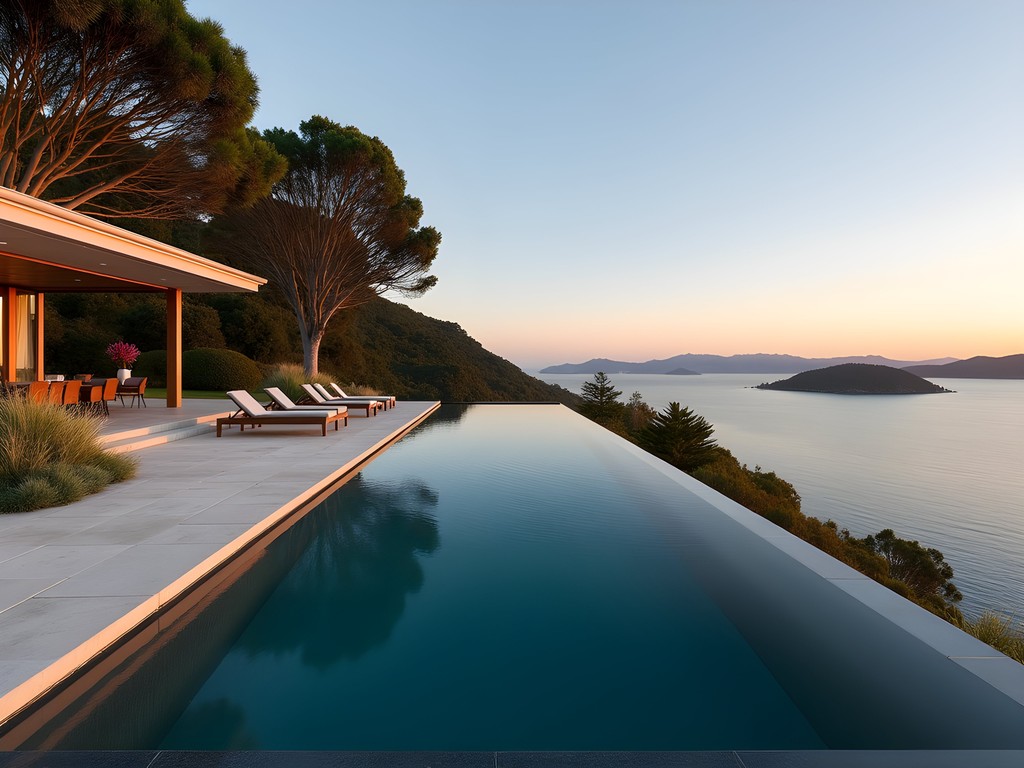
💡 Pro Tips
- Book Rahimoana Villa if possible—its northern exposure maximizes both sunrise and sunset views
- Request the private chef to incorporate foraged local ingredients for a true sense of place
- Explore the property's native bush walks at dawn when birdsong is most vibrant
The Landing: Where Cultural Heritage Meets Luxury
The Landing represents something increasingly rare in luxury development—a property that honors rather than erases the cultural and ecological history of its location. Situated on a 1000-acre heritage site in the Purerua Peninsula, this collection of four residences sits on land rich with both Māori and European settlement history.
What distinguishes The Landing from other luxury properties I've encountered globally is its commitment to restoration. The owners have planted over a million native trees and shrubs, effectively creating a microclimate that supports indigenous bird species while stabilizing the coastal soil structure—a technique I've advocated in my lectures at the Royal Botanical Gardens.
The Cooper Residence, where I stayed, exemplifies what I call 'contextual luxury'—opulence that derives meaning from its surroundings rather than imposing foreign concepts of grandeur. The residence features local timber and stone that weather naturally with the elements, developing what Japanese aesthetic tradition calls 'wabi-sabi'—the beauty of impermanence and imperfection.
For my morning ritual, I used my trusty travel yoga mat on the private deck overlooking the bay. The mat's natural rubber composition and excellent grip made it perfect for stability during my practice while connecting with the surrounding environment—something I recommend to all my clients seeking to maintain wellness routines while traveling.
During my stay, I had the privilege of walking the property with the resident horticulturist, discussing their native plant propagation program. Their approach to ecological restoration while maintaining luxurious comfort offers valuable lessons for the wellness retreats I design—proving that environmental stewardship and luxury are not mutually exclusive concepts.

💡 Pro Tips
- Schedule a private vineyard tour to understand how the microclimate influences the estate's wines
- Request the heritage walk with the resident historian to appreciate the cultural significance of the land
- Visit the wetland restoration project—it's a masterclass in sustainable water management
Kauri Cliffs: Therapeutic Landscapes with Ocean Views
Kauri Cliffs presents a fascinating case study in how a property primarily known for its world-class golf course has evolved to embrace broader principles of wellness and environmental stewardship. Named for the majestic kauri trees that once dominated New Zealand's northern forests, the lodge demonstrates respect for its ecological context while providing a luxury experience.
The spa facility particularly impressed me from a therapeutic landscape perspective. Situated in a native totara forest, the treatment rooms open to private garden spaces where the sound of moving water and rustling leaves creates what environmental psychologists call 'attention restoration'—natural stimuli that allow directed attention to recover from fatigue.
During my consultation work with wellness retreats, I often reference the Kauri Cliffs spa garden as exemplary of how to create microenvironments that support specific healing modalities. The careful placement of aromatic plants near treatment areas enhances the therapeutic experience through subtle olfactory cues—a technique I first explored when designing my wife's healing garden years ago.
For guests seeking deeper immersion in the landscape, I recommend exploring the property's three private beaches. Pink Beach, with its unique rose-hued sand derived from crushed shells, offers a meditative space unlike any other I've encountered in my global travels. I spent an afternoon sketching the interplay of light on water there, using my travel watercolor kit to capture the unique palette of blues and pinks that define this coastline.
The lodge architecture itself employs a plantation style that might initially seem incongruous with New Zealand's landscape. However, the generous verandas and indoor-outdoor flow actually function brilliantly as transitional spaces that frame the dramatic coastal views while providing shelter from the sometimes mercurial maritime weather.
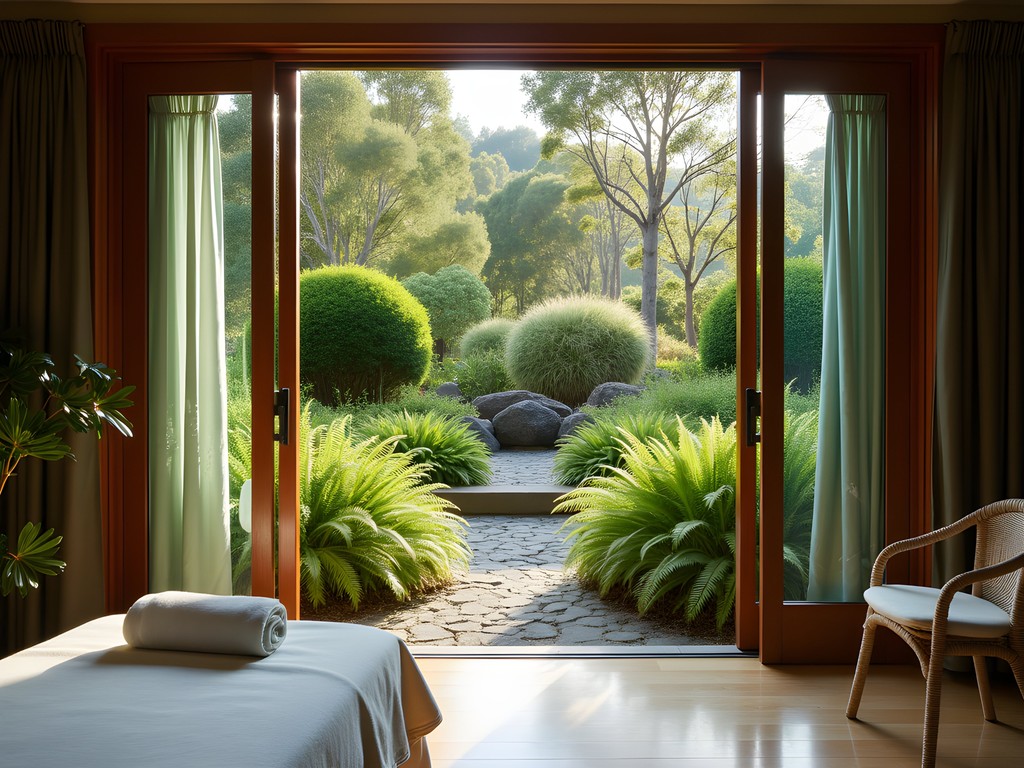
💡 Pro Tips
- Book a spa treatment in late afternoon when the light filtering through the totara forest creates an extraordinary atmosphere
- Request a picnic hamper and spend time at Pink Beach during low tide to fully appreciate its unique coloration
- Even non-golfers should walk the clifftop holes of the golf course for spectacular coastal vistas
Helena Bay Lodge: Intimate Luxury with Regenerative Principles
Helena Bay Lodge represents the new vanguard of ultra-luxury accommodations that embrace regenerative principles—not merely sustaining but actively improving their environmental context. With just five suites catering to a maximum of ten guests, this intimate property on the northeast coast offers perhaps the most personalized experience in the region.
What fascinated me from a landscape architecture perspective was the property's commitment to regenerative agriculture. The estate's farm supplies much of the produce for the Michelin-starred level restaurant, creating a closed-loop system that reduces carbon footprint while enhancing guest experience through hyper-local cuisine.
The main building's design demonstrates sophisticated understanding of passive solar principles—a subject I've lectured on extensively at sustainability conferences. Floor-to-ceiling windows on the northern façade capture winter sun while deep eaves provide summer shade, reducing energy consumption while maintaining optimal comfort. This integration of sustainability with luxury represents the future direction of high-end hospitality.
The beachfront setting offers direct access to a protected cove where I spent mornings observing the interplay of light on water—a meditative practice I developed during my wife's recovery. For those seeking to document these extraordinary landscapes, I recommend the compact camera I carry on all my travels. Its exceptional dynamic range captures both bright skies and shadowed forest details in a single frame, essential for documenting the design principles I study.
Perhaps most impressive is Helena Bay's marine conservation initiative. The property has established a no-take zone along its coastline, allowing marine ecosystems to recover from fishing pressure. Swimming in this protected area offers a glimpse of what New Zealand's waters must have looked like centuries ago—an experience that connects guests to the ecological history of the place in a profound way.
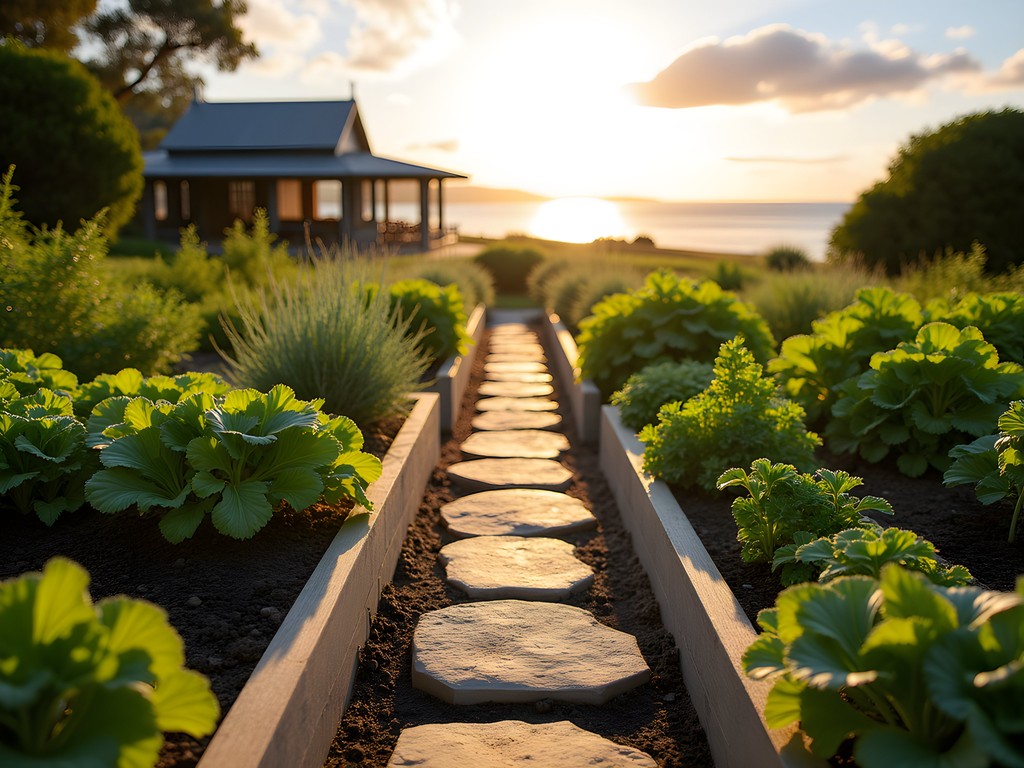
💡 Pro Tips
- Request a tour of the farm with the head gardener to understand their regenerative agriculture practices
- Book the forest therapy walk where a guide demonstrates traditional Māori plant knowledge
- Ask for dinner at the chef's table to witness the transformation of estate-grown ingredients into world-class cuisine
Designing Your Therapeutic Journey
Creating a truly restorative experience in the Bay of Islands requires thoughtful planning that aligns accommodations with personal wellness objectives. Through my decades of designing healing environments, I've developed an approach that maximizes the therapeutic potential of travel experiences.
First, consider the circadian rhythms of your stay. Each property I've reviewed offers different exposure to morning and evening light—a critical factor in regulating sleep patterns and mood. Eagles Nest provides panoramic exposure ideal for those seeking to reset disrupted sleep cycles, while The Landing's eastern orientation makes it perfect for early risers wanting to capture dawn light over the bay.
Second, evaluate how each property facilitates connection with different natural elements. Those seeking the healing properties of water might prefer Helena Bay's intimate cove, while individuals drawing energy from forests would find Kauri Cliffs' native woodland setting more restorative.
For capturing these experiences, I rely on my travel journal to document observations about light, spatial relationships, and emotional responses to different environments. This practice, which I recommend to all my clients, transforms passive consumption of luxury into active engagement with place—essential for genuine restoration.
Consider also the sensory dimensions beyond the visual. The olfactory experience of native pohutukawa blossoms at Eagles Nest differs markedly from the salt-infused air at Helena Bay. These subtle differences affect our limbic system response and consequently our emotional state during the stay.
Finally, don't overlook the importance of transition spaces. How does each property manage the journey from public to private space? The gradual unfolding of landscape at The Landing creates a decompression sequence that prepares the mind for deeper relaxation—a principle I've applied in therapeutic garden design throughout my career.
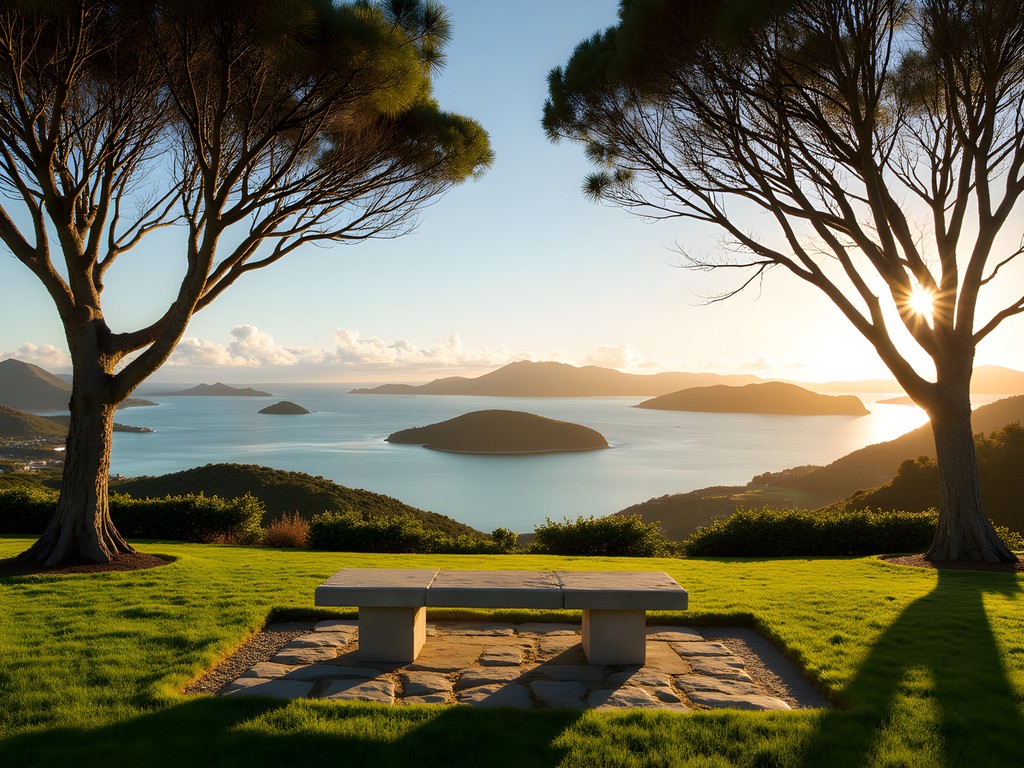
💡 Pro Tips
- Book accommodations based on your personal circadian preferences—east-facing rooms for morning people, west-facing for those who come alive at sunset
- Request information about seasonal plantings and blooms to align your visit with specific therapeutic plant exposures
- Consider splitting your stay between two properties to experience different microenvironments of the Bay
Final Thoughts
The Bay of Islands offers more than luxury accommodations—it provides living laboratories for the principles of therapeutic landscape design I've dedicated my career to studying. Each property presents a unique interpretation of how built environments can enhance natural healing processes through thoughtful integration with place. Whether you seek the architectural sophistication of Eagles Nest, the cultural richness of The Landing, the established elegance of Kauri Cliffs, or the intimate sustainability of Helena Bay, the common thread is an authentic connection to this extraordinary maritime landscape. As I return to my teaching and consulting work in London, I carry with me not just memories but tangible design inspiration from these exemplary properties—each demonstrating that true luxury lies not in ostentation, but in creating spaces where human wellbeing and environmental stewardship exist in harmonious balance.
✨ Key Takeaways
- The Bay of Islands luxury accommodations excel in biophilic design that enhances wellbeing
- Each property offers distinct therapeutic environments suited to different wellness objectives
- Regenerative practices are increasingly central to authentic luxury experiences in New Zealand
- The transitional spaces between architecture and landscape provide the most powerful restorative moments
📋 Practical Information
Best Time to Visit
December through March (New Zealand summer)
Budget Estimate
$1,000-2,500 USD per night
Recommended Duration
7-10 days minimum
Difficulty Level
Easy
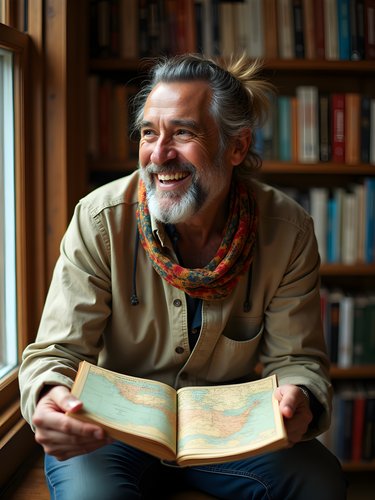
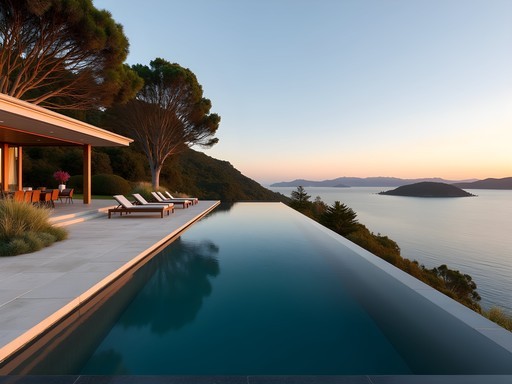
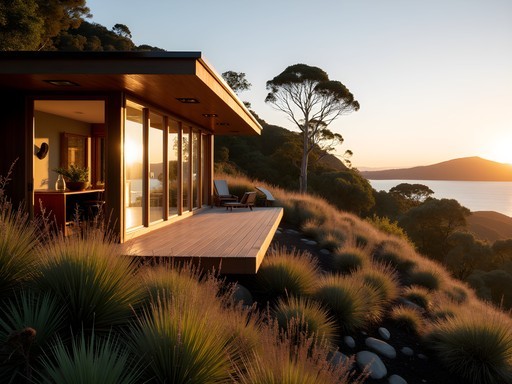
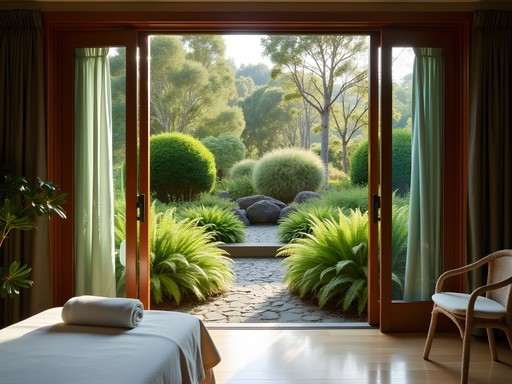
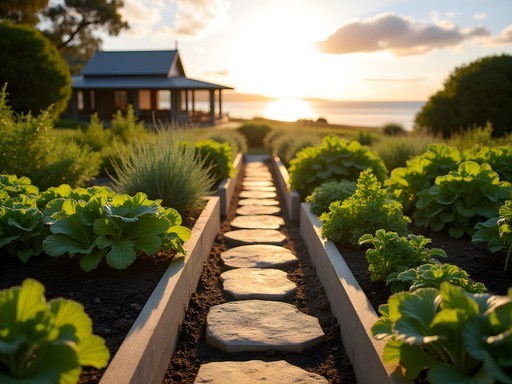
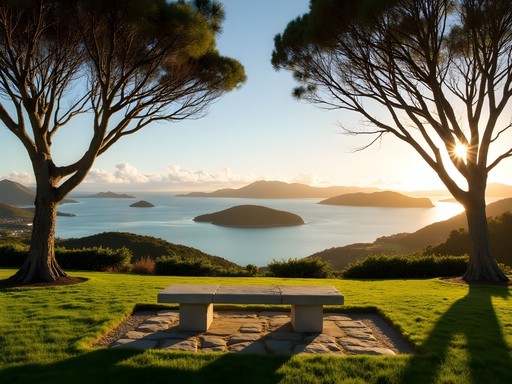


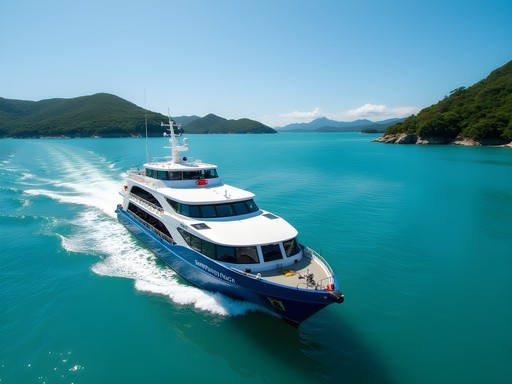

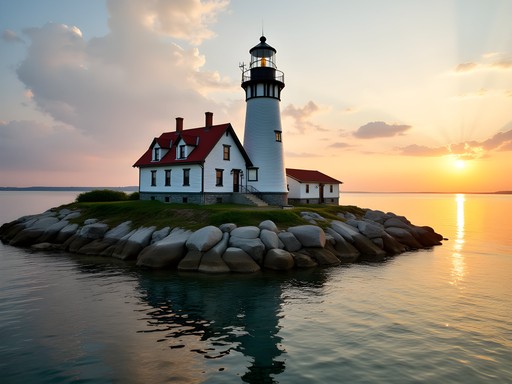
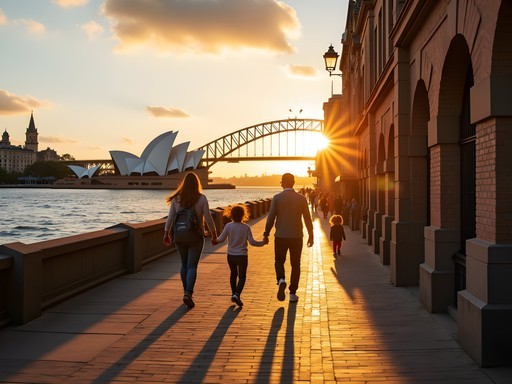
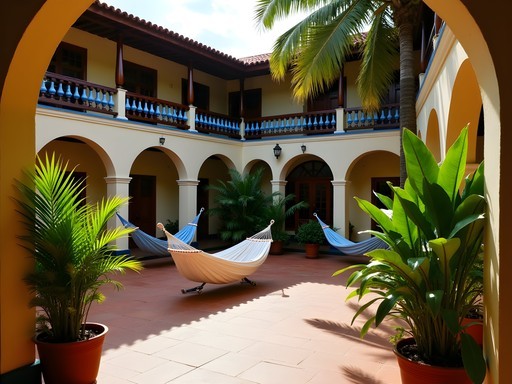
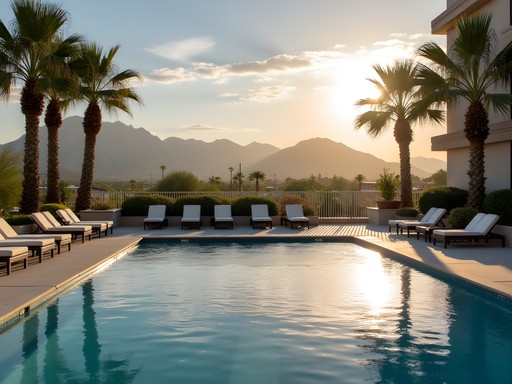
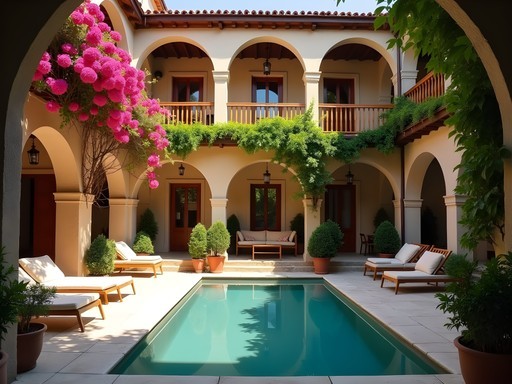
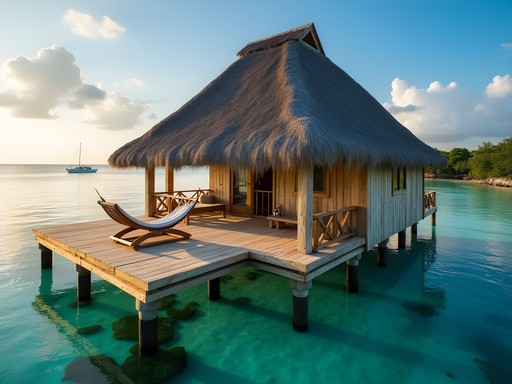
Comments
traveladventurer
These places look INCREDIBLE! Taylor, your photos of Kauri Cliffs have me dreaming! Have you been to all four properties? Which one would you recommend for a honeymoon in March?
Taylor Moreau
For a honeymoon, I'd personally recommend Eagles Nest for the privacy - each villa is completely secluded with its own infinity pool. March is perfect weather-wise too! Kauri Cliffs is magnificent but has more of a lodge atmosphere, while The Landing is great if you're interested in wine and Māori cultural history.
traveladventurer
Thanks so much Taylor! Eagles Nest sounds perfect for what we're looking for. Time to start saving up! 😍
Jose McDonald
Taylor, your perspective on these properties as therapeutic landscapes is so refreshing! I spent 3 nights at Helena Bay Lodge last month and was blown away. The staff-to-guest ratio is incredible - felt like having the whole place to ourselves. Their farm-to-table restaurant deserves its own blog post! The chef took us on a tour of their gardens where they grow most of their produce. If anyone's planning a trip, try to book during weekdays in shoulder season (May or November) - better rates and even more attentive service. I've been using my travel journal to document all the architectural details that blend with the natural environment. Your post captures that harmony perfectly!
traveladventurer
Jose - that farm-to-table experience sounds amazing! Did you need a rental car to get to Helena Bay Lodge or do they offer transfers?
Jose McDonald
They offer helicopter transfers from Auckland ($$$$) but we just rented a car. The drive from Auckland is gorgeous - about 3 hours with some great stops along the way!
springhero
These places look absolutely stunning! I'm planning a trip to NZ next year. Any idea what the average nightly rate is at Eagles Nest? Their website is a bit vague on pricing.
Jose McDonald
I stayed at Eagles Nest last year - it's definitely splurge territory! Expect around NZ$1,500-2,500 per night depending on which villa and season. Worth every penny though for those infinity pools and the views!
springhero
Whoa, that is steep! But those views... might need to save up a bit longer. Thanks for the info!
Taylor Moreau
Springhero - Jose's estimate is pretty accurate. If you're looking for something a bit more affordable but still special, check out some boutique B&Bs in Russell. Not quite the same luxury level but still lovely!
vacationace
Just got back from Eagles Nest last week and WOW - it lived up to everything in this article and more! We stayed in the Rahimoana villa and honestly felt like celebrities. The floor-to-ceiling windows made us feel like we were floating above the bay. Taylor, you're so right about the therapeutic landscape design - there was something about how the property was laid out that made us feel instantly relaxed. The private beach access was our favorite part. Worth every penny for a special occasion!
Taylor Moreau
So glad you had that experience at Rahimoana! That villa is particularly special with its 300-degree views. The way they've designed the sightlines to create moments of revelation as you move through the space is masterful.
summermaster
Has anyone stayed at both Helena Bay Lodge and Kauri Cliffs? Trying to decide between them for our anniversary trip. Which has better food?
Gregory Boyd
I've stayed at both, and while they're both exceptional, they offer different experiences. Helena Bay is more intimate with just five suites and incredibly personalized service. Their food is Michelin-quality with an Italian chef using produce from their own garden. Kauri Cliffs is larger with a world-class golf course and more expansive views. Their restaurant is more classic New Zealand fine dining with excellent local seafood. For an anniversary, Helena Bay feels more romantic and secluded, but Kauri has more activities. I'd recommend packing a good travel binoculars for either property - the wildlife viewing is spectacular.
summermaster
Thanks so much Gregory! Sounds like Helena Bay might be more our style for this particular trip. Really appreciate the detailed comparison!
coffeeninja3119
Those infinity pools at Eagles Nest! 😍
sunnytime
These places look amazing but what's the damage to the wallet? Are we talking thousands per night? Also, what's the best time of year to visit Bay of Islands?
Taylor Moreau
Yes, these are definitely splurge properties - typically $1,000-3,000 NZD per night depending on the villa and season. For the best weather with fewer crowds, I'd recommend March-April or October-November. The shoulder seasons offer perfect temperatures and better rates!
sunnytime
Whew, that's steep but looks worth it for a special occasion. Thanks for the season tips!
Amit Sullivan
Taylor, your piece beautifully captures the essence of what makes Bay of Islands so special. I stayed at The Landing last autumn and was mesmerized by how they've woven Māori cultural elements into such a luxurious setting. The private wine tasting experience overlooking the bay at sunset was transformative. I particularly appreciate your focus on the therapeutic landscape aspect - something I've noticed but never articulated so well. These properties don't just offer luxury; they offer a recalibration of the soul through intentional design that connects guests to the natural world.
Taylor Moreau
Thank you, Amit! The Landing's integration of cultural heritage with luxury is indeed remarkable. So glad you experienced that sunset wine tasting - it's truly magical how the changing light transforms the entire landscape.
vacationace
These places look absolutely stunning! The Eagles Nest views are straight out of a dream. Adding this to my bucket list!
smartmate
Your photos are incredible! The Bay of Islands has been on my list forever. Did you rent a car to get between these places or is there decent transport?
Taylor Moreau
Thanks! I'd definitely recommend renting a car. Public transport is limited and most of these properties are quite secluded - that's part of their charm. Plus, the coastal drives between locations are stunning!
Venture X
Premium card with 2X miles, $300 travel credit, Priority Pass